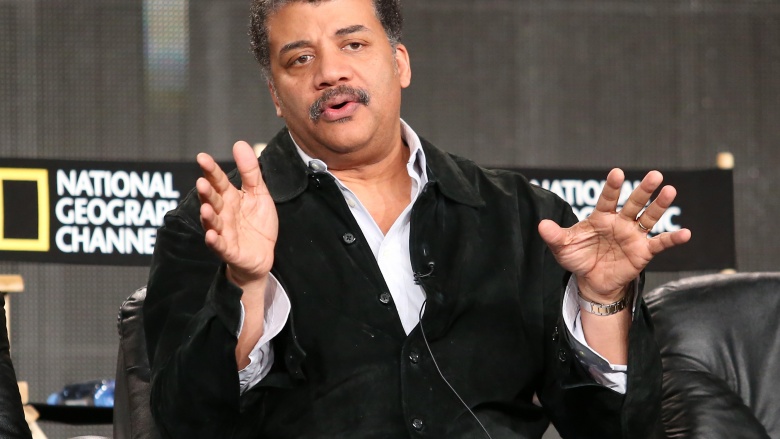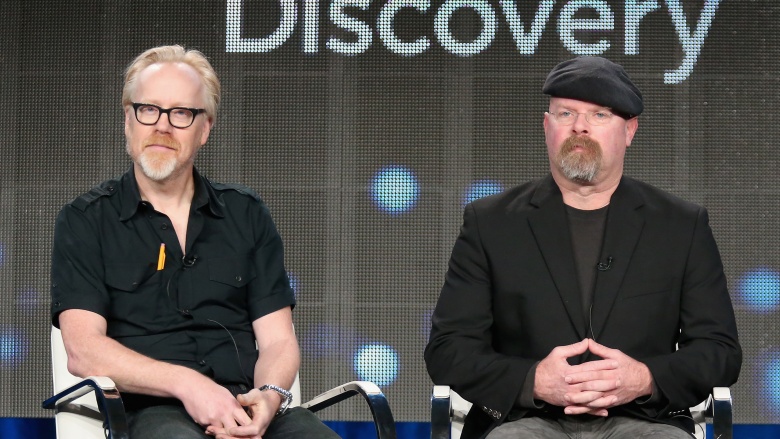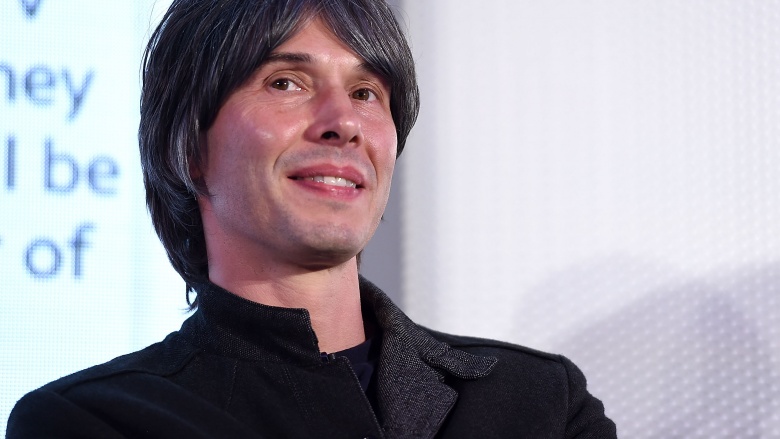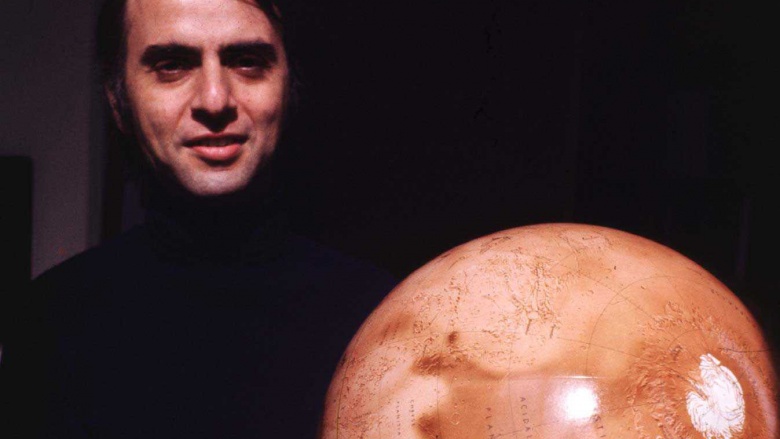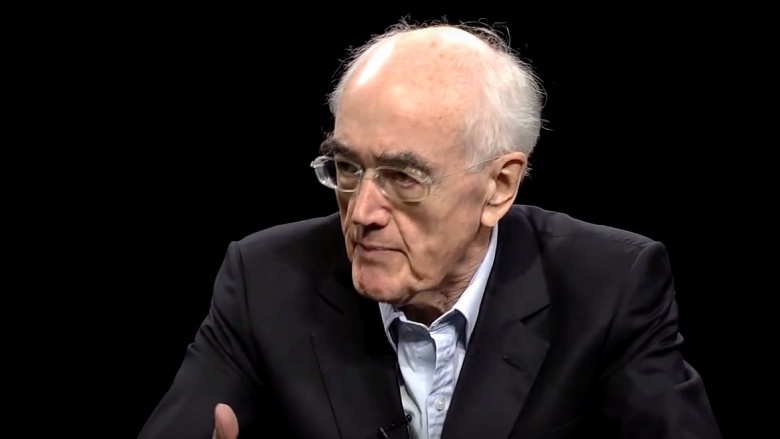Awesome Moments When TV Scientists Blew Our Minds
Scientists — especially TV ones — say some pretty amazing things. It's all part of the job for them. But despite how some of their announcements are probably no big deal to them, to us they can be totally epic. Here are just some TV scientists' works and words that almost made our heads explode.
When Neil deGrasse Tyson claimed the Matrix could be real
In April 2016, the good doctor Neil deGrasse Tyson said the likelihood of the world we live in being a computer simulation is very real, and very high. During that year's Isaac Asimov Memorial Debate, Tyson argued that as long as we accept that universal simulation is feasible, then at some point in the years to come, we'll discover that some highly intelligent species out there has already simulated a universe, and we're the result of that simulation. However, proving this true proves trickier than coming up with the idea. Essentially, humanity would have to figure out all the rules of the universe, which is what physicists do. Of course, that's not going to happen anytime soon, so there's no need worrying over whether or not to take the red or blue pill.
When Adam Savage and Jamie Hyneman floated a lead balloon
In what they call a completely pointless episode, the Mythbusters, Adam Savage and Jamie Hyneman, built a floating lead balloon. According to common logic, a lead balloon shouldn't be able to go very far, as it's a very dense, heavy metal. But the mustachioed duo wasn't going to be deterred by the thoughts of the masses, so on January 23, 2008, they proved the throngs wrong and busted that myth. With some lead foil, which can be purchased on Amazon, they created a 10-foot cube capable of floating even before they put pure helium in the thing. With just a mixture of helium and oxygen, their dirigible not only took flight, but carried a ballast-filled basket as well. Of course, Led Zeppelin fan already knew the experiment would work.
When Bill Nye explained why we should care about climate change
Cornell University graduate and former children's' educator, Bill Nye, has turned his attention to climate change as of late. In fact, probably no one has been more vocal about it, but he doesn't want to be doing it all alone. In a 2011 YouTube video, he not only explains how climate change works, but also provides a simple experiment illustrating the reality of the situation. This experiment can be performed at home, with two small balls, two glass containers, two heat lamps, and a tank of CO2. Nye goes on to explain the ramifications of global warming and the disastrous effects it has on the planet and on our lives. But don't worry—the bow-tied Science Guy's lecture isn't all doom and gloom. He also provides information, and proposes some simple steps we can all take to prevent the planet from going the way of Mad Max, or worse, Waterworld.
When Brian Cox said time travel is easy
British physicist Brian Cox truly astounded everyone when he said that time travel was easy, during an address he gave at the Royal Institution in 2013. Albeit, it's only easy in one direction. During the talk that marked the 50th anniversary of Doctor Who, he said that it's possible to build a time machine and move forward into the future. You just need to be able to reach the speed of light. As Cox explained, "If you go fast, your clock runs slow relative to people who are still. As you approach the speed of light, your clock runs so slow that you could come back 10,000 years in the future." Going into the past proves to be a bit trickier though. For that, would-be chrononauts need a wormhole, and there aren't too many signs pointing out where those are.
When Carl Sagan told us what we're made of
In one of his more famous quotes, original Cosmos host Carl Sagan stated that, to borrow a quote from Moby, we are all made of stars. The late cosmologist and astrophysicist said, "The cosmos is also within us, we're made of star stuff." Essentially, everything in the Universe originated from the Big Bang, including us. While it sounds like a new-agey way of saying we're all connected in some existential, metaphysical way, it's actually a pretty profound statement. By the way, if this makes you feel insignificant ... it shouldn't. Look at it this way: We, and everything around us, are the end result of a phenomenal series of events and reactions that began at the centers of primordial stars. It's just unfortunate that it also includes things like terror, war, and Justin Bieber.
When Michio Kaku explained what deja vu might actually be
We all think of deja vu as brief-but-strong moments of memory, and we usually write them off without another thought. But we shouldn't, as we may be glimpsing into another facet of the multiverse. Yes, physicists (such as damed physicist Michio Kaku) thinks deja vu might be a window into another world, and that comic book-style multiverses actually exist, minus the superpowers. And just like in the classic "Flash of Two Worlds" story, each of these parallel universes vibrates at a different frequency. For whatever reason, the vibrating atoms making up our bodies possibly vibrate at the same frequencies as these other universes, eliciting glimpses from these other worlds, and that's deja vu. Now we just have to hope there isn't an Anti-Monitor out there who decides to wipe it all out.
When David Attenborough explained life
Beginning with 1979's Life on Earth, Sir David Attenborough decided he wanted to explain life on this planet. He traveled the globe, tracing the evolution of frogs, plants, humans, apes, and many other living things. If it sounds like a monumental endeavor, that's because it was. The Life project wound up consisting of nine different series and took almost three decades to film, ending with 2008's Life in Cold Blood. He could very well produce another series, though, as he shows no signs of slowing down. It's no wonder that he doesn't since, as he put it: "It seems to me that the natural world is the greatest source of excitement; the greatest source of visual beauty; the greatest source of intellectual interest. It is the greatest source of so much in life that makes life worth living."
When James Burke predicted the future
Back in 1973, science historian and author James Burke predicted the omnipresence of computers by 1993, and despite underbidding by about a decade, he was pretty spot-on otherwise. Burke knew that not only would schools and businesses would become dependent on computers, but average people as well. He also foresaw databases of personal information, and how people would willingly share even the most intimate of personal details with complete strangers. Users of Myspace, Facebook, and Twitter are proof enough of this.
His prognostication caused such a fuss that the BBC upped the stakes a bit, asking him what life will (or would, depending on when you're reading this) be like in 2100. His prediction: 3D nanofabricators will eliminate poverty and scarcity. If he's right, it'll be amazing. If he's wrong, he'll probably be dead by then, so he's got nothing to lose.

